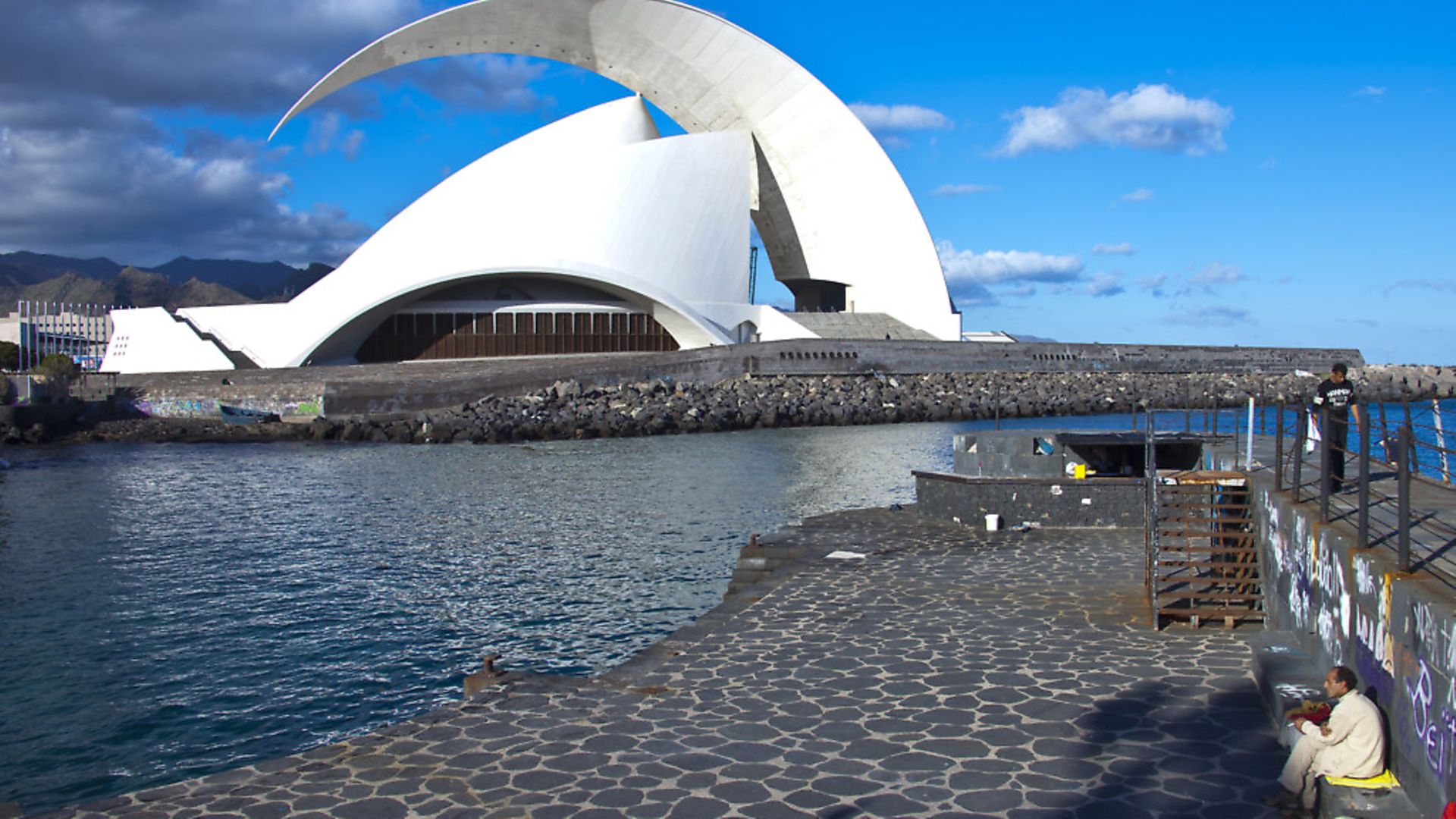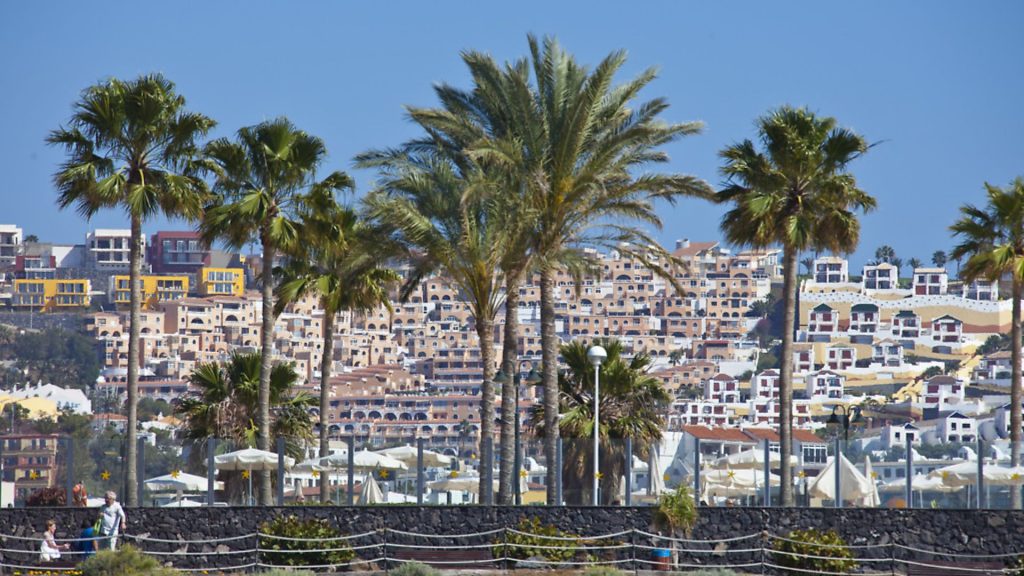
For many, Tenerife is synonymous with beachside package holidays. But, as EMMA LUCK explains, that’s only half the island’s story.

So vast is the tourism industry that has sprung up on Tenerife that it can – at least from afar – obscure a quite different side to the island.
But as this domineering sector has grown and utterly transformed the largest of the Canary Islands, so have efforts been made to safeguard its distinctive historical and cultural identity. The solution has been to effectively split the island in two.
This has seen the southern end establish itself as one of Europe’s most popular destinations, where visitors – primarily from the north of the continent – flock year-round to enjoy the warm climate and home-from-home facilities. This tourist boom has, of course, generated phenomenal revenues but the south has paid a high price by losing an element of its own Spanish identity to cater to its visitors, with more generic activities such as water sports, boat trips and theme parks.
The north, meanwhile, has been quietly getting on with a cultural evolution of a more Canarian nature. It has managed to establish a more successful symbiosis and its own cultural relevance hasn’t been surrendered to the might of tourism.
There is no epic distance between the lower and upper portions of Tenerife. Only 47 miles separate the jam-packed beaches and giant hotels of Playa de las Americas and the capital Santa Cruz but there is minimal crossover, and the one feels a world away from the other.
It was not always thus. Before tourism came to dominate, the island was a much more homogenous entity, united by a very specific culture which stretched back through the centuries.
It was the fair-haired Guanches and their legendary mencey (kings) who first really stamped their mark on Tenerife. They arrived on the archipelago during the first millennium BC and are descended from the Berber tribes of North Africa.
The Guanches ruled over the Atlantic and established trade routes with the Romans. Their religion was polytheistic although the cult of the dead was also prominent; their practices included the mummification of the deceased, excellent examples of which can be found in the island’s museums.
Their long rule finally ended in 1496 when, after four years of conflict, the Guanche kings and their warriors were finally overwhelmed by the Spanish. Tenerife had been the last of the Canary Islands to be conquered and had taken the longest to submit to the Castilian troops.
Conquest meant a new era for the island. San Cristóbal de la Laguna, widely held to be the island’s most beautiful city, was established at this time and became the capital. Declared a World Heritage site in 1999, the northern city has the pick of the historic sites, including the 16th century Royal Sanctuary Church and the 1904 Cathedral of San Cristóbal de La Laguna. The city is also home to the University of La Laguna, the establishment of which made it the archipelago’s first university city.
It yielded to Santa Cruz, also in the north of the island, in the 1700s due to a declining economy and population, and the port city eventually became the capital of Tenerife and the Canary Islands, a status which it now shares with Las Palmas, on Gran Canaria.
During these centuries, the island was well placed to capitalise on the bountiful trade routes that crisscrossed the surrounding ocean. Its strategic position also made it a tempting target for Spain’s enemies. Lord Nelson lost an arm during an unsuccessful attempt to take Tenerife during the Battle of Santa Cruz de Tenerife in 1797. And the great man was not alone in failing to wrest the island from its inhabitants. A task force led by Sir Walter Raleigh had come up short a century earlier.
This independent spirit and arms length rule from Spain – which lay several days sailing away – may have been a factor in the burgeoning cultural scene for which Tenerife became known. Many of the island’s earliest creatives benefitted from a greater level of freedom than their counterparts in mainland Spain who were caught more directly in the gaze of the all-powerful Catholic monarchy.
As the more developed part of the island – closer to Spain and those vital trade routes, and an altogether more hospitable location than the drier, more arid south, the undefended coast of which was vulnerable to pirates – the northern area became its cultural epicentre.
The first centre for painting was in La Laguna, with the earliest protagonists setting up their easels there in the 16th century. As the movement developed, other schools opened in La Orotava, Puerto de la Cruz and Santa Cruz, which became a key hub not only for the exchange not only of goods but of ideas and culture, thanks to its port.
Valentin Sanz, born in Santa Cruz in 1849, was the earliest known landscape painter in the Canary Islands. Yet his career shows that while a remote and isolated island location can foster artistic talent, that same remoteness and isolation can also be a limiting factor. Like many Tinerfenos, Sanz had to leave the region to drive his career forward. He studied in Seville and Madrid, and worked as a professor in the San Alejandro Academy of Fine Arts in Cuba. His work tackles the issue of light and colour with great character, closing in on impressionism. Some of his work is displayed at the Municipal Museum of Fine Arts of Santa Cruz, including El Paisaje de La Laguna (The Landscape of La Laguna).
The close of the 19th century saw Realism and Impressionism cohabiting with strains of Romanticism that could still be seen in the works of some artists on the island. The first recorded impressionist painter on the island was Juan Rodriguez Botas (1880-1917).
He progressed from the early work done by Sanz and adopted the style that was then sweeping France. Santa Cruz-born Francisco Bonnín Guerín (1874-1963), on the other hand, was a master of watercolours to such an extent that he created his own school of landscape painting and founded the influential Association of Canary Watercolour Painters, many of whose members followed his technique and won awards.
As for the most famous of the island’s artists, that title sits well upon the shoulders of Oscar Dominguez (1906-1957). Considered one of Spain’s greatest surrealist painters after Miró, Dalí and Picasso, Dominguez left a large and highly personal collection of work which is displayed throughout the island. Although he ended up in Paris, his work is heavily influenced by his Tinerfeno heritage and is peppered with Canarian references such as mountains and the native dragon tree.
Alongside its distinct artistic heritage, Tenerife also developed its own literary culture. This emerged from an oral storytelling tradition in the mid-15th century, which evolved over time towards different genres such as epic poetry, Baroque aesthetics, Neoclassical prose and Romanticism. In this evolution, it was slightly behind the curve of European artistic trends, due primarily to the sheer distance it lay from the rest of the continent.
Despite this, Tenerife’s rich literary seam has produced several notable authors. Antonio de Viana was born in La Laguna in 1578 and his epic poem Antiguedades de las Islas Afortunadas (Antiques of the Fortunate Islands) was an ode to the Guanches and tells of the conquest of Tenerife by Spain. It offers a wealth of historical information about this pivotal period.
Later, in the 18th century, the enlightenment saw a vibrant cultural movement spring up on the island which lasted into the 20th century and beyond.
Many of its members were united by the fact that they found themselves in conflict with the Catholic church or central government over their beliefs:
Writer Jose Viera y Clavijo (1731-1813) established himself at the heart of this creative movement where he was able to reconcile his faith and personal beliefs with the reality as described by science. Also a priest, his rationalism led him to clash with the church. His work covers all literary genres but he spent two decades working on his masterpiece Noticias (News), a wide-ranging history of the Canary Islands which described the origin, character and customs of its ancient inhabitants and their conquest by the Europeans.
Neoclassical writer, poet and native of Puerto de la Cruz, Tomas de Iriarte (1750-1791), was one of the first dramatists to bring the Neoclassical style to a wider audience. Universally celebrated as the author of Fabulas literarias (Literary fables) his later years were dogged by controversy and in 1786 he was reported to the Inquisition for his sympathies with the French philosophers.
Considered the father of Catalan theatre, Santa Cruz-born playwright Àngel Guimerà (1845-1924) was nominated a staggering 23 times for the Nobel Prize in Literature but never won due to political pressure from Spain’s central government. After moving back to his father’s birthplace in Catalonia, he wrote a number of plays including Tierra baja (Lowlands) and Mar y cielo (Sea and Sky) which were translated into other languages and performed abroad. He proved to be instrumental in the revival of Catalan as a literary language in the late 19th and early 20th centuries. His birthplace paid tribute by naming the main theatre of Santa Cruz de Tenerife, the oldest on the Canary Islands, after him.
By the age of 14, La Laguna-born novelist, dramatist and poet Mercedes Pinto had made a name for herself, becoming known as the ‘Canarian Poetess’. Her most famous work, the semi-autobigraphical Él (This Strange Passion), was adapted for the big screen by the film-maker Luis Buñuel. Her pursuit of a feminist agenda led to conflict with the Catholic church and she was forced to live most of her life outside Spain.
These themes of art and literature clashing with conservatism are not unique to Tenerife, or to Spain, of course. And the island has not managed to escape the most destructive forces of reaction. The Canary Islands fell to the nationalists in 1936 and a mass execution of Franco’s opponents in Tenerife followed, an atrocity that led many Tinerfeños to relocate to Latin America.
Franco’s dictatorship had a suppressive effect on Tenerife’s cultural life, but did not snuff it out. The years of his rule also saw significant advances in the island’s tourism industry.
Its attraction to overseas visitors was nothing new. Back in the late 1800s, tourism had been centred on northern Tenerife, with well-heeled Europeans heading there to escape their freezing winters.
With very little seasonal variation, the year-round mild climate and clear air were promoted as offering a variety of health benefits. It quickly became the main source of revenue with Puerto de la Cruz the first city to develop as a leisure destination as the earliest visitors arrived by steamer into the port at Santa Cruz.
During her visit in 1927 when she fled to the island two months after her infamous 11-day disappearance, Agatha Christie, was inspired to finish her novels The Mystery of the Blue Train and The Mysterious Mr Quinn.
As travel was revolutionised in the second half of the 20th century, however, the focus moved dramatically from the north to the south of the island.
The northern end has a noticeably higher rainfall because of its proximity to Mount Teide, Tenerife’s own volcano. The hotter, drier south was therefore more attractive for the new generation of jet-setting tourists who were able to arrive at, and move around, the island more easily than in the past. What’s more, the area was far less developed than the north, so offered greater opportunities for the construction of mega resorts such as Playa de Las Americas and Los Cristianos.
George Harrison, Ringo Starr and Paul McCartney helped put the island on the tourism map when they went on holiday in Tenerife after releasing their first album in 1963. They blended happily into the crowds of foreign visitors and were able to enjoy their last holiday undisturbed by bodyguards, fans and the press.
As the number of visitors grew, the often fog-bound Los Rodeos (Tenerife North) airport was under great strain. In 1977, 583 people were killed when two Boeing 747 jets collided on a foggy runway, in the deadliest accident in aviation history.
The following year, Reina Sofia airport (Tenerife South) opened. It now handles around 90% of visitors to the island, dwarfing its northern counterpart, and has cemented the separation of Tenerife’s north and south and utterly transformed its tourism economy.
The sector may have threatened, at times since, to overwhelm the island’s cultural character, but it has never succeeded. Indeed, in recent years, the distinct artistic identity of the northern end of the island has been further strengthened by a wave of architectural innovation that is apparent in many major art and music venues.
The dramatic white building on Santa Cruz’s waterfront is unmissable. Its roof soars 58 metres over the main auditorium and then curves downwards, narrowing to a point like a crashing Atlantic wave. This is the Tenerife Concert Hall, a focal point for the north’s lively arts programme. It is home to the Tenerife Symphony Orchestra and has welcomed guest soloists of the calibre of Plácido Domingo to cement its reputation as a national and international benchmark orchestra. The renowned Ópera de Tenerife is also based there.
Tucked alongside the Barranco de Santos ravine in Santa Cruz stands the Tenerife Arts Centre (TEA -Tenerife Espacio de las Artes). It works effectively as a catalyst, connecting the daily life of Santa Cruz with the island’s art and culture. It houses a permanent exhibition of the works of Tenerife’s own Óscar Domínguez and has exhibited pieces by Andy Warhol and Henry Moore.
The building’s diagonal elements and sloping floors showcase a contemporary space designed by the Canaries-born Virgilio Gutiérrez Herreros and Swiss architects Herzog & de Meuron who were responsible for London’s Tate Modern.
Today, the island seems to have made peace with its informal divide. It reaps the financial benefits from its southern resorts while maintaining its identity and historical narrative via its cultural stronghold in the north. Could this offer a blueprint for tourism elsewhere and avoid cultural heritage being lost forever to a fast tourist buck…?









